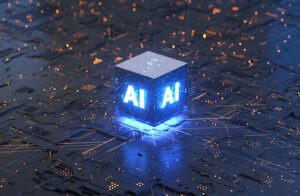The journey towards building ethical AI is challenging, yet it also presents an opportunity to shape a future where technology serves as a force for good
By Riccardo Ocleppo, March 14th 2024
Source here:eCampus News
In the exponentially-evolving realm of artificial intelligence (AI), concerns surrounding AI bias have risen to the forefront, demanding a collective effort towards fostering ethical AI practices. This necessitates understanding the multifaceted causes and potential ramifications of AI bias, exploring actionable solutions, and acknowledging the key role of higher education institutions in this endeavor.
Unveiling the roots of AI bias
AI bias is the inherent, often systemic, unfairness embedded within AI algorithms. These biases can stem from various sources, with data used to train AI models often acting as the primary culprit. If this data reflects inequalities or societal prejudices, it can unintentionally translate into skewed algorithms perpetuating those biases. But bias can also work the other way around: take the recent case of bias by Google Gemini, where the generative AI created by Google, biased by the necessity of more inclusiveness, actually generated responses and images that have nothing to do with the reality it was prompted to depict.
Furthermore, the complexity of AI models, frequently characterized by intricate algorithms and opaque decision-making processes, compounds the issue. The very nature of these models makes pinpointing and rectifying embedded biases a significant challenge.
Mitigating the impact: Actionable data practices
Actionable data practices are essential to address these complexities. Ensuring diversity and representativeness within training datasets is a crucial first step. This involves actively seeking data encompassing a broad spectrum of demographics, cultures, and perspectives, ensuring the AI model doesn’t simply replicate existing biases.
In conjunction with diversifying data, rigorous testing across different demographic groups is vital. Evaluating the AI model’s performance across various scenarios unveils potential biases that might otherwise remain hidden. Additionally, fostering transparency in AI algorithms and their decision-making processes is crucial. By allowing for scrutiny and accountability, transparency empowers stakeholders to assess whether the AI functions unbiasedly.
The ongoing journey of building ethical AI
Developing ethical AI is not a one-time fix; it requires continuous vigilance and adaptation. This ongoing journey necessitates several key steps:
- Establishing ethical guidelines: Organizations must clearly define ethical standards for AI development and use, reflecting fundamental values such as fairness, accountability, and transparency. These guidelines serve as a roadmap, ensuring AI projects align with ethical principles.
- Creating multidisciplinary teams: Incorporating diverse perspectives into AI development is crucial. Teams of technologists, ethicists, sociologists, and individuals representing potentially impacted communities can anticipate and mitigate biases through broader perspectives.
- Fostering an ethical culture: Beyond establishing guidelines and assembling diverse teams, cultivating an organizational culture prioritizes ethical considerations in all AI projects is essential. Embedding ethical principles into an organization’s core values and everyday practices ensures ethical considerations are woven into the very fabric of AI development.
The consequences of unchecked bias
Ignoring the potential pitfalls of AI bias can lead to unintended and often profound consequences, impacting various aspects of our lives. From reinforcing social inequalities to eroding trust in AI systems, unchecked bias can foster widespread skepticism and resistance toward technological advancements.
Moreover, biased AI can inadvertently influence decision-making in critical areas such as healthcare, employment, and law enforcement. Imagine biased algorithms used in loan applications unfairly disadvantaging certain demographics or in facial recognition software incorrectly identifying individuals, potentially leading to unjust detentions. These are just a few examples of how unchecked AI bias can perpetuate inequalities and create disparities.
The role of higher education in fostering change
Higher education institutions have a pivotal role to play in addressing AI bias and fostering the development of ethical AI practices:
- Integrating ethics into curricula: By integrating ethics modules into AI and computer science curricula, universities can equip future generations of technologists with the necessary tools and frameworks to identify, understand, and combat AI bias. This empowers them to develop and deploy AI responsibly, ensuring their creations are fair and inclusive.
- Leading by example: Beyond educating future generations, universities can also lead by example through their own research initiatives. Research institutions are uniquely positioned to delve into the complex challenges of AI bias, developing innovative solutions for bias detection and mitigation. Their research can inform and guide broader efforts towards building ethical AI.
- Fostering interdisciplinary collaboration: The multifaceted nature of AI bias necessitates a collaborative approach. Universities can convene experts from various fields, including computer scientists, ethicists, legal scholars, and social scientists, to tackle the challenges of AI bias from diverse perspectives. This collaborative spirit can foster innovative and comprehensive solutions.
- Facilitating public discourse: Universities, as centers of knowledge and critical thinking, can serve as forums for public discourse on ethical AI. They can facilitate conversations between technologists, policymakers, and the broader community through dialogues, workshops, and conferences. This public engagement is crucial for raising awareness, fostering understanding, and promoting responsible development and deployment of AI.
Several universities and higher education institutions, wallowing in the above principles, have created technical degrees in artificial intelligence shaping the artificial intelligence professionals of tomorrow by combining advanced technical skills in AI areas such as machine learning, computer vision, and natural language processing while developing in each one of them ethical and human-centered implications.
Also, we are seeing prominent universities throughout the globe (more notably, Yale and Oxford) creating research departments on AI and ethics.
Conclusion
The journey towards building ethical AI is challenging, yet it also presents an opportunity to shape a future where technology serves as a force for good. By acknowledging the complex causes of AI bias, adopting actionable data practices, and committing to the ongoing effort of building ethical AI, we can mitigate the unintended consequences of biased algorithms. With their rich reservoir of knowledge and expertise, higher education institutions are at the forefront of this vital endeavor, paving the way for a more just and equitable digital age.
Check out OPIT degrees
-
Career aligned
-
Fully Online
-
EU-accredited institution





